Epoxy pipe coating is a method of coating the inside of pipes, tanks, and other vessels with a layer of epoxy resin. This coating helps to protect the interior surfaces of the pipes from corrosion and chemical damage, as well as improve the flow of fluids through the pipes. The epoxy resin is applied to the interior surface of the pipe using a spray or brush, and it is allowed to cure and harden. The resulting coating is a smooth and durable layer that is resistant to chemicals and abrasion.
Epoxy pipe coating is commonly used in the oil and gas industry, as well as in water treatment plants and other industrial settings. It is also used in residential plumbing to improve the lifespan and performance of pipes.
Types of Epoxy Pipe Coatings
There are several types of epoxy pipe coatings, including:
- Solvent-free epoxy coatings: These coatings do not contain solvents and are commonly used in potable water systems due to their low toxicity.
- Solvent-based epoxy coatings: These coatings contain solvents and are used in applications where a faster cure time is needed.
- Fusion-bonded epoxy coatings: These coatings are applied electrostatically and then melted onto the surface of the pipe to create a strong, durable bond.
- Novolac epoxy coatings: These coatings are formulated to provide greater chemical resistance, making them ideal for use in harsh chemical environments.
- High-temperature epoxy coatings: These coatings are designed to withstand high temperatures and are used in applications where the pipes will be exposed to extreme heat.
The type of epoxy coating used will depend on the specific application and the conditions the pipes will be exposed to
Applications of Epoxy Coatings
Epoxy pipe coatings have a wide range of applications in various industries, including:
- Oil and gas industry: Epoxy coatings are used to protect pipelines from corrosion and chemical damage.
- Water and wastewater treatment plants: Epoxy coatings are used to protect pipes and tanks from corrosion and chemical damage caused by the harsh chemicals used in the treatment process.
- Chemical processing industry: Epoxy coatings are used to protect pipes, tanks, and other equipment from corrosion and chemical damage caused by the harsh chemicals used in the manufacturing process.
- Food and beverage industry: Epoxy coatings are used to protect pipes and tanks used in food and beverage products from corrosion and contamination.
- Residential plumbing: Epoxy coatings are used to protect and extend the life of pipes in residential plumbing systems.
- Marine industry: Epoxy coatings are used to protect ships, offshore structures, and underwater pipelines from corrosion and damage caused by saltwater and other harsh marine environments.
Overall, epoxy pipe coatings provide an effective solution for protecting pipes and other equipment from corrosion, chemical damage, and other forms of wear and tear. Fig. 1 (Image Credit: https://www.houstonpowdercoaters.com/) Below shows a typical example of Epoxy pipe Coatings.
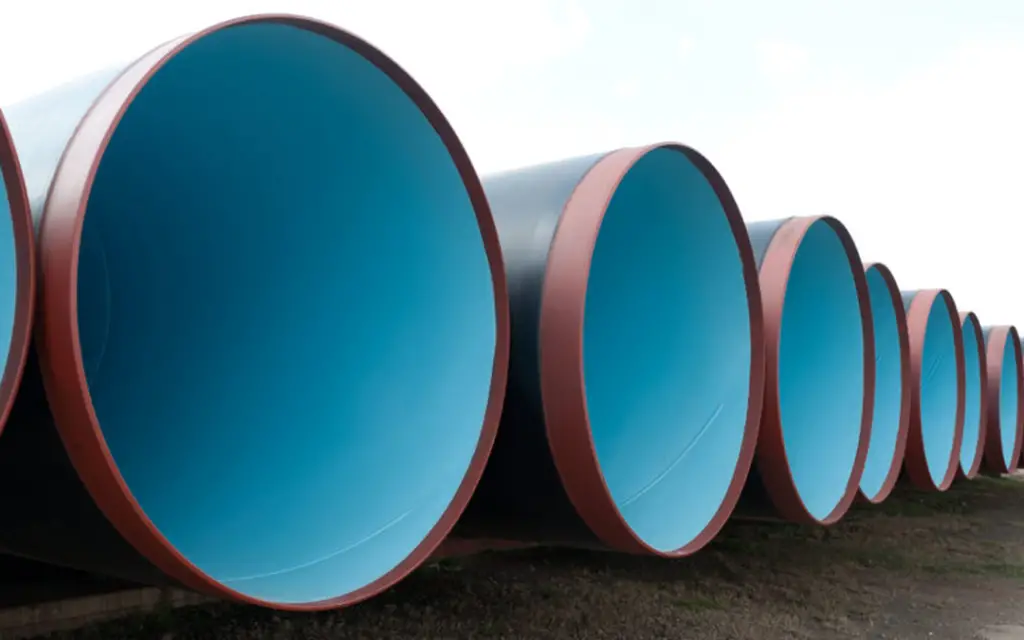
Steps for application of Epoxy Pipe Coatings
The application process for epoxy pipe coatings may vary depending on the specific product and application, so it’s important to follow the manufacturer’s instructions carefully. Overall, the application process for epoxy pipe coatings typically involves the following steps:
- Surface preparation: The interior surface of the pipe must be thoroughly cleaned and prepared before the epoxy coating is applied. This typically involves sandblasting or using a wire brush to remove any rust, debris, or other contaminants that could interfere with the adhesion of the coating.
- Mixing the epoxy: The two components of the epoxy coating (resin and hardener) must be mixed together according to the manufacturer’s instructions.
- Application: The epoxy coating can be applied using a brush, roller, or spray equipment. The coating should be applied in a thin, even layer, and care should be taken to avoid any drips or uneven areas.
- Curing: The epoxy coating must be allowed to cure according to the manufacturer’s instructions. This typically involves allowing the coating to dry for several hours or overnight, depending on the specific product.
- Inspection: Once the coating has cured, it should be inspected for any defects or areas that may need touch-ups. Any imperfections should be corrected before the coating is put into service.
Technologies for Epoxy Coating of Pipelines
There are several technologies available for epoxy coating pipelines, each with its own advantages and disadvantages. Here are some of the best available technologies for epoxy coating pipelines:
Spray lining technology
This method involves using a high-pressure spray gun to apply an epoxy coating to the interior of the pipe. This method is fast and efficient, but it requires a high level of skill and experience to ensure an even coating.
Brush and roll technology
This method involves manually applying the epoxy coating to the interior of the pipe using brushes and rollers. This method is slower than spray lining but can be more precise and provide a thicker coating.
Spin casting technology
This method involves spinning the pipe at a high speed while spraying the epoxy coating onto the interior of the pipe. This method can produce a very even and uniform coating but can be more expensive than other methods.
Flood coating technology
This method involves flooding the pipe with liquid epoxy and allowing it to coat the interior of the pipe through gravity. This method is best suited for smaller-diameter pipes and can produce a very even and uniform coating.
Cured-in-place pipe (CIPP) lining
This method involves inserting a liner into the pipe and then curing it with heat or ultraviolet light, creating a new pipe within the old one. This method can be very effective for repairing damaged or corroded pipes and can also provide a protective epoxy coating.
Fusion Bonded Epoxy Pipe Coating
Fusion-bonded epoxy (FBE) pipe coating is a type of epoxy coating that is commonly used to protect steel pipes from corrosion. FBE coating is created by applying a thermosetting epoxy powder to the surface of the pipe and then melting and fusing the powder to the steel using a high-temperature curing process. This creates a seamless, durable coating that is highly resistant to corrosion and abrasion.
FBE pipe coating is commonly used in a variety of industries, including oil and gas, water and wastewater, and construction. It can be applied to pipes of varying sizes and shapes and is particularly effective in protecting pipelines that are exposed to harsh environments or corrosive substances.
Some of the benefits of FBE pipe coating include:
- High corrosion resistance – FBE coating provides a highly effective barrier against corrosion, even in harsh environments.
- Durable and long-lasting – FBE coating is highly durable and can last for several decades with proper maintenance.
- Environmentally friendly – FBE coating is a solvent-free, environmentally friendly coating that does not emit harmful pollutants or chemicals.
- Easy to apply – FBE coating can be applied using a variety of methods, including electrostatic spray, fluidized bed, and hot flocking.
Overall, FBE pipe coating is a popular and effective method for protecting steel pipes from corrosion and extending their lifespan.
Glass Flake Epoxy Pipe Coating
Glass flake epoxy pipe coating is a type of epoxy coating that incorporates small glass flakes into the coating material. The glass flakes serve as a reinforcing agent, providing additional strength and durability to the coating. The flakes also create a barrier that helps to prevent moisture and other corrosive substances from penetrating the surface of the coating and reaching the underlying steel pipe.
Glass flake epoxy pipe coating is particularly effective in protecting pipes that are exposed to harsh environments or corrosive substances. It is commonly used in industries such as oil and gas, chemical processing, and marine applications. Some of the benefits of glass flake epoxy pipe coating include:
- High resistance to corrosion – Glass flake epoxy coating provides a highly effective barrier against corrosion, even in harsh environments.
- Excellent adhesion – Glass flake epoxy coating has excellent adhesion to steel surfaces, ensuring that the coating stays in place and provides long-lasting protection.
- Increased durability – The addition of glass flakes to the coating material provides additional strength and durability, making it more resistant to abrasion and impact damage.
- Easy to apply – Glass flake epoxy coating can be applied using a variety of methods, including spray, brush, and roller.
Overall, glass flake epoxy pipe coating is a popular and effective method for protecting steel pipes from corrosion and extending their lifespan.
Epoxy Pipe Coating Price
The price of epoxy pipe coating can vary depending on several factors, such as the type of epoxy coating used, the size of the pipe, and the extent of the damage or corrosion. In general, the cost of epoxy pipe coating can range from $15 to $30 per linear foot of pipe, but this is only a rough estimate and the actual cost can be higher or lower depending on the specific project requirements.
Other factors that can affect the price of epoxy pipe coating include the cost of surface preparation, labor costs, and any additional services that may be required, such as inspection and testing. It’s important to get a detailed quote from a professional contractor to get an accurate estimate for your specific project.
Keep in mind that while epoxy pipe coating may seem expensive compared to other pipe repair methods, it can be a cost-effective solution in the long run as it can extend the life of the pipe and reduce the need for frequent repairs or replacement.
Epoxy Pipe Coating Failures
While epoxy pipe coatings are generally durable and effective at preventing corrosion, there are a few common types of epoxy pipe coating failures that can occur:
- Adhesion failure: This occurs when the epoxy coating fails to properly adhere to the surface of the pipe, which can be caused by factors such as improper surface preparation or a poorly formulated coating. Adhesion failure can result in the coating peeling or flaking off, exposing the underlying steel surface to corrosion.
- Blistering: This occurs when small bubbles or blisters form on the surface of the epoxy coating, which can be caused by improper surface preparation, moisture contamination, or excessive heat during curing.
- Cracking: This occurs when the epoxy coating develops small cracks, which can be caused by factors such as thermal expansion and contraction, improper coating thickness, or exposure to chemicals.
If epoxy pipe coating failures occur, they can be repaired using the following methods:
- Abrasive blasting: This involves removing the damaged coating and preparing the surface of the pipe by abrasive blasting to create a clean, rough surface for the new coating to adhere to.
- Spot repair: This involves removing the damaged coating in the affected area and applying a new coating to that area only, rather than recoating the entire pipe.
- Recoating: If the damage is extensive, it may be necessary to remove the entire coating and recoat the entire pipe.
It is important to work with a professional contractor who is experienced in epoxy pipe coating and repair to ensure that any coating failures are properly addressed and repaired.
Difference between Epoxy Pipe Coating and Epoxy Pipe Lining
Epoxy pipe coating and epoxy pipe lining are both methods for rehabilitating old or damaged pipes, but they differ in several ways.
Epoxy Pipe Coating:
- Involves applying a layer of epoxy coating to the interior of the pipe
- Typically used to repair smaller areas of damage or corrosion
- Can be applied to pipes of varying sizes and shapes
- Can improve the flow of fluids through the pipes
- Can last for several decades if applied correctly
- Can be less expensive than traditional pipe replacement methods
Epoxy Pipe Lining:
- Involves creating a seamless, jointless liner inside the existing pipe using an epoxy resin
- Typically used to rehabilitate longer sections of damaged or deteriorating pipe
- Requires access points to be created to insert the epoxy liner
- Can only be applied to pipes with a relatively simple shape and configuration
- Can improve the structural integrity of the pipe and prevent leaks
- Can last for several decades if installed correctly
- Can be less expensive than traditional pipe replacement methods
In summary, epoxy pipe coating involves applying a layer of epoxy to the interior of the pipe, while epoxy pipe lining involves creating a seamless liner inside the existing pipe using an epoxy resin. Epoxy pipe coating can be used to repair smaller areas of damage, while epoxy pipe lining is typically used to rehabilitate longer sections of pipe. Both methods can improve the longevity and efficiency of pipes, and their suitability for a particular project depends on the extent and location of the damage, as well as the shape and configuration of the pipe.
Pros and Cons of Epoxy Pipe Lining/Coating
Pros of Epoxy Pipe Lining:
- Cost-effective: Epoxy pipe lining is often less expensive than traditional pipe replacement methods, as it can be done without digging up the pipes or tearing down walls.
- Fast installation: Epoxy pipe lining can be completed in a matter of hours or days, depending on the extent of the repairs needed.
- Durable: Epoxy pipe lining creates a seamless, jointless, and corrosion-resistant liner that can last for several decades.
- Improves flow: Epoxy pipe lining can improve the flow of fluids through the pipes, which can result in better efficiency and lower operating costs.
- Environmentally friendly: Epoxy pipe lining is a green alternative to pipe replacement, as it does not require the disposal of old pipes or the use of new materials.
Cons of Epoxy Pipe Lining:
- Limited application: Epoxy pipe lining may not be suitable for all types of pipes or damage. It works best for small to medium-sized pipes with simple shapes and relatively minor damage.
- Temporary fix: While epoxy pipe lining is a durable solution, it is not a permanent fix. The lining will eventually need to be replaced or repaired.
- Potential for air pockets: If the epoxy is not applied correctly, air pockets can form, which can compromise the effectiveness of the lining.
- Risk of failure: Epoxy pipe lining can fail if it is not installed correctly or if the conditions inside the pipe are not suitable for the lining.
In conclusion, epoxy pipe lining is a cost-effective and durable alternative to traditional pipe replacement methods. However, it may not be suitable for all applications, and proper installation is critical to its success.
Epoxy Pipe Coating and Lining Companies
There are many companies that provide epoxy pipe coating and lining services, but some of the renowned companies in this field include:
- SPT Pipe – SPT Pipe is a leading provider of epoxy pipe lining services for both commercial and residential properties.
- Nu Flow Technologies – Nu Flow Technologies offers a range of pipe lining solutions, including epoxy pipe lining, for commercial and residential properties.
- Perma-Liner Industries – Perma-Liner Industries specializes in trenchless pipe lining solutions, including epoxy pipe lining and coating, for a variety of industries.
- Roto-Rooter – Roto-Rooter is a well-known plumbing and drain cleaning company that offers epoxy pipe lining and coating services for residential and commercial properties.
- Flow-Liner Systems – Flow-Liner Systems provides epoxy pipe lining and coating solutions for pipes of various sizes and shapes, including underground and vertical pipes.
These are just a few examples of companies that provide epoxy pipe coating and lining services. When choosing a company for your project, it’s important to do your research and select a reputable, experienced company with a proven track record of success.


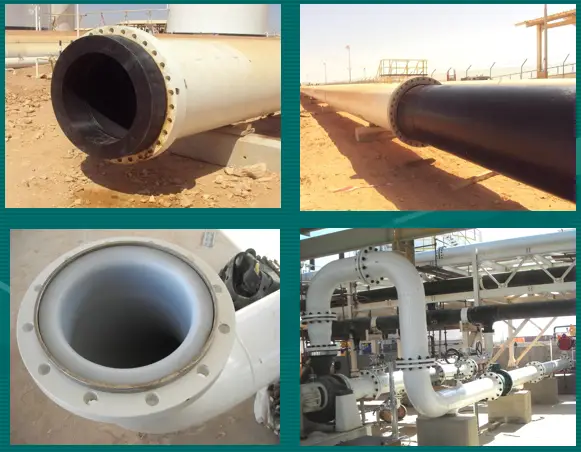
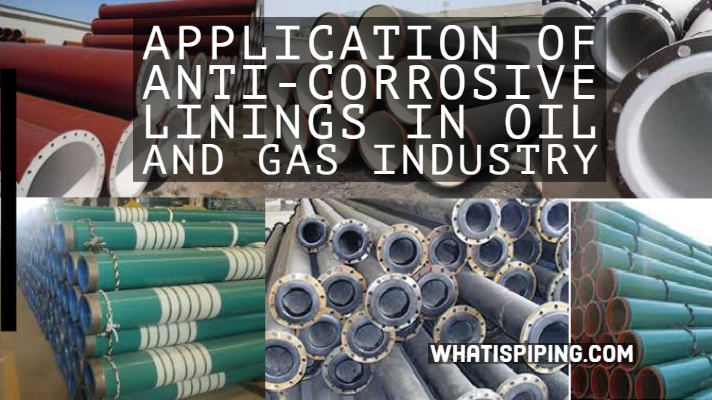

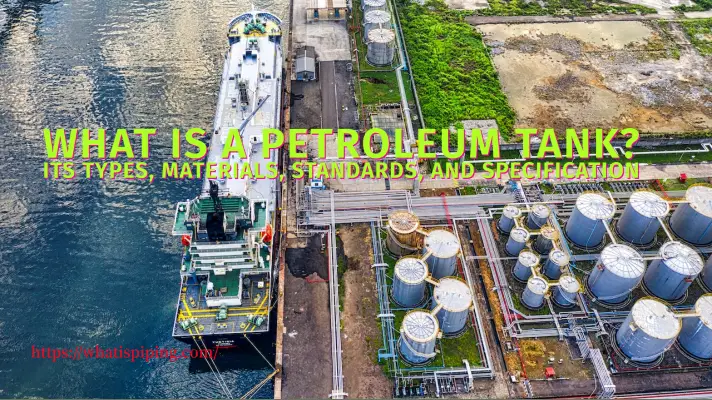


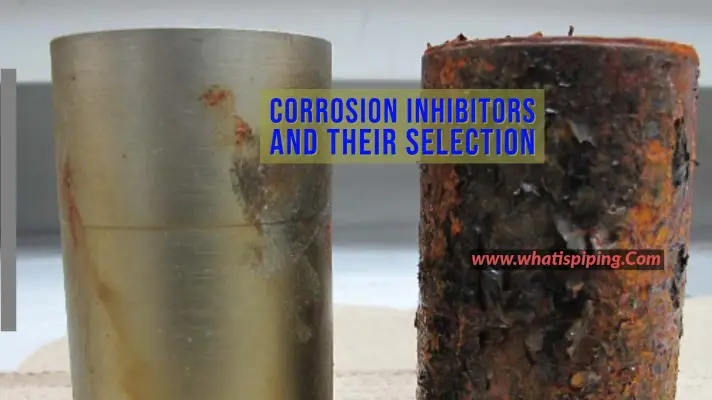
I found your article on epoxy pipe coating to be quite informative. It’s interesting to learn about the benefits of using epoxy coating in pipes, such as increasing their lifespan and preventing corrosion. The step-by-step process you described also helps to provide a better understanding of how the coating is applied.
I particularly appreciate the section on the challenges and limitations of epoxy pipe coating. It’s important for readers to understand the potential drawbacks of using this method, such as the need for specialized equipment and skilled personnel. The section on the cost considerations is also helpful for those who may be considering this option.
Overall, I found this article to be a great resource for anyone interested in epoxy pipe coating. Keep up the good work!
Dear What Is Piping,
Thank you for sharing your article on epoxy pipe coating. The information you provide is valuable and insightful, shedding light on the benefits and applications of this pipe protection technique. I would like to express my appreciation for the content you’ve presented and offer some feedback based on my understanding.
Your article does an excellent job of explaining epoxy pipe coating as a method of protecting pipes from corrosion and extending their lifespan. You provide a comprehensive overview of the coating process, highlighting the steps involved and the materials used. The detailed explanation helps readers understand the science behind epoxy pipe coating and its effectiveness in preventing corrosion.
I appreciate the emphasis on the advantages of epoxy pipe coating, such as its ability to create a durable and chemically resistant barrier. You explain how the epoxy material adheres to the pipe’s surface, forming a protective layer that can withstand harsh environments and corrosive substances. The increased longevity and reduced maintenance costs associated with epoxy-coated pipes make this technique an attractive solution for various industries.
Furthermore, your article explores the different types of epoxy coatings available and their specific applications. By discussing options like solvent-free epoxy, fusion-bonded epoxy, and reinforced epoxy, you provide readers with a comprehensive understanding of the various choices and their suitability for different pipe systems. This knowledge allows readers to make informed decisions based on their specific requirements.
I would like to suggest providing additional information on the preparation and surface treatment required before applying epoxy pipe coating. Elaborating on the importance of surface cleaning, roughening, and ensuring proper adhesion between the epoxy material and the pipe’s surface would enhance the practicality of the article. Including tips or best practices for surface preparation would be beneficial for readers interested in implementing epoxy pipe coating in their projects.
Moreover, it would be helpful to mention any potential limitations or considerations when using epoxy pipe coating. Addressing factors such as temperature restrictions, application challenges in complex pipe configurations, or compatibility with different pipe materials would give readers a more comprehensive understanding of the technique’s applicability and potential constraints.
Overall, your article provides valuable insights into epoxy pipe coating and its benefits. By explaining the process, materials, and applications, you contribute to the understanding of this protective technique and its significance in various industries.
Thank you again for sharing this informative article. I hope my feedback proves useful and contributes to the knowledge of your readers.
I recently came across your article titled “Epoxy Pipe Coating” on your website, and I want to commend you on providing a comprehensive and informative guide on this important topic. Your article is a valuable resource for individuals seeking knowledge about epoxy pipe coating and its applications.
Your explanation of the epoxy pipe coating process, including surface preparation, epoxy application, and curing, is thorough and easy to follow. The inclusion of detailed steps and descriptions helps readers understand the various stages involved in implementing this protective coating system.
I appreciate how you highlighted the benefits of epoxy pipe coating, such as corrosion protection, increased durability, and improved flow characteristics. By elaborating on these advantages, you effectively demonstrate why epoxy coating is a popular choice for enhancing the longevity and performance of pipes in various industries.
Furthermore, your exploration of the different types of epoxy coatings and their specific applications offers valuable insights into the versatility of this protective solution. From potable water pipes to oil and gas pipelines, your article covers a wide range of scenarios where epoxy coatings can be applied effectively.
The inclusion of images and diagrams throughout the article is also praiseworthy, as it helps readers visualize the coating process and understand the concepts more easily. Visual aids like these greatly enhance the overall learning experience and make complex information more accessible.
If I may offer a suggestion, it would be beneficial to provide some information on the potential limitations or considerations associated with epoxy pipe coating. Addressing factors such as temperature limitations, compatibility with different pipe materials, and maintenance requirements could further enrich the content and offer a well-rounded perspective.
In conclusion, I would like to express my gratitude for your well-researched and informative article on epoxy pipe coating. Your expertise and attention to detail shine through, making it a valuable resource for professionals in the piping industry and individuals interested in understanding this protective coating system.
Thank you for sharing your knowledge, and I look forward to reading more of your articles in the future.
I wanted to take a moment to express my appreciation for the informative article titled “Epoxy Pipe Coating” on your website. The article provides valuable insights into the epoxy pipe coating process, its benefits, and its applications in various industries.
Epoxy pipe coating is a fascinating topic, and your article does an excellent job of explaining the process in a clear and concise manner. I appreciate the thoroughness with which you cover the entire coating process, from surface preparation and application to curing and inspection. The step-by-step approach helps readers understand the complexity of the process and the importance of each stage in achieving a durable and long-lasting pipe coating.
Furthermore, your article highlights the key advantages of epoxy pipe coating, such as corrosion resistance, increased flow efficiency, and reduced maintenance costs. By explaining how epoxy coatings protect pipes from internal corrosion and external environmental factors, you provide valuable information to readers who may be considering this solution for their piping systems.
I particularly appreciate the emphasis you place on the various applications of epoxy pipe coating in different industries, including oil and gas, water treatment, and chemical processing. This showcases the versatility and effectiveness of epoxy coatings in addressing corrosion and extending the service life of piping infrastructure.
One suggestion I would like to make is to provide more information on the limitations or potential challenges associated with epoxy pipe coating. While the article focuses primarily on the benefits, it would be helpful to mention any considerations or circumstances where alternative coating methods may be more suitable.
In conclusion, I want to express my gratitude for sharing your expertise on epoxy pipe coating through your informative article. Your comprehensive coverage of the coating process, benefits, and applications provides valuable insights to professionals and enthusiasts in the field of piping systems. I look forward to exploring more of your content in the future and deepening my knowledge in this area.
Thank you once again for your valuable contribution.
Frequently I read your pipeline protection methods. It is really interesting to know about how to protect & care to be taken during coating application.
Hello, I want to develop an epoxy formula for water in the pipe, do you suggest a formula to start with?
Sincerely
Niloofar Shaabani
I need help for 32 mm and 25 mm MS pipe epoxy painting from inside and out side.
The flooding method is best?
kindly suggest